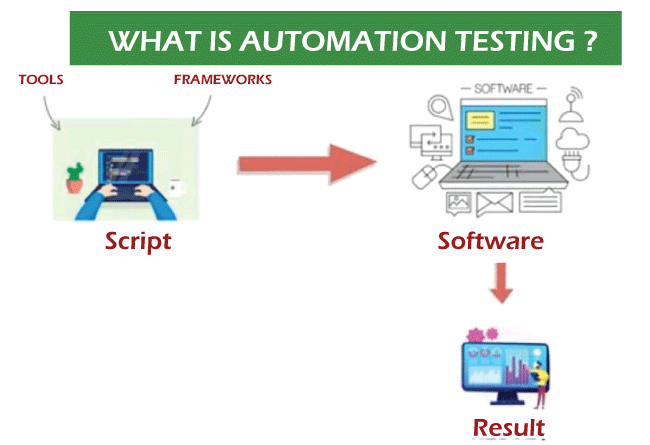Just How Automation Testing Changes Quality Control Processes
Just How Automation Testing Changes Quality Control Processes
Blog Article
The Future of Software Advancement: Utilizing the Prospective of Automation Examining for Faster, Much More Dependable Releases
In the world of software program development, the quest for quicker, much more trusted releases has long been a central focus. As technology breakthroughs and customer expectations progress, the duty of automation testing in achieving these goals has actually come to be progressively noticeable - automation testing. The potential advantages of automation testing are huge, promising not only to expedite release cycles however also to enhance the overall top quality and consistency of software program products. In a landscape where rate and accuracy are paramount, using the capacities of automation testing stands as a vital method for remaining ahead.
The Power of Automation Examining
In the realm of software program development, the implementation of automation screening has actually verified to significantly boost efficiency and quality control procedures. By automating lengthy and recurring hand-operated screening jobs, software groups can simplify their testing initiatives, lower human mistakes, and increase the general advancement lifecycle. Automation screening permits for the quick implementation of test situations throughout different settings and arrangements, offering designers with quick feedback on the top quality of their code modifications.
Among the essential advantages of automation testing is its capacity to boost test protection, guaranteeing that even more performances and features are extensively tested. This thorough screening approach helps identify flaws early in the advancement cycle, decreasing the chance of costly bugs getting to manufacturing. Furthermore, automation screening promotes continuous integration and constant distribution practices, allowing teams to release software program updates more regularly and reliably.
Accelerating Release Cycles
The acceleration of launch cycles in software development is crucial for remaining competitive in the quickly evolving technology landscape. Shortening the time between releases allows business to react quickly to market needs, integrate customer comments quickly, and surpass rivals in supplying cutting-edge functions. By leveraging and adopting agile methodologies automation screening tools, growth teams can enhance their processes, determine insects earlier, and make sure a better product with each release.
Increasing launch cycles also enables software application companies to keep an one-upmanship by quickly addressing safety and security susceptabilities and adjusting to changing governing needs. Moreover, constant launches assist in structure customer depend on and commitment as individuals take advantage of constant enhancements and bug fixes. This repetitive technique fosters a society of continual improvement within advancement groups, motivating collaboration, advancement, and an emphasis on supplying worth to end-users.
Guaranteeing Regular Quality Guarantee
Amid the increased release cycles in software application growth, keeping constant quality control becomes critical for guaranteeing that each version satisfies the highest criteria of performance and dependability. Constant quality assurance entails an organized method to screening and reviewing software to recognize and rectify any kind of concerns or flaws immediately. To attain this, software program advancement groups must develop durable QA processes that are integrated throughout the growth lifecycle. This includes specifying clear quality standards, performing thorough testing at each stage of growth, and leveraging automation testing tools to streamline the procedure.
Overcoming Common Testing Obstacles
Addressing and fixing usual testing obstacles is important for making sure the effectiveness and effectiveness of software application growth procedures. One widespread challenge is the lack of thorough test coverage, where testers might forget certain circumstances, causing prospective bugs getting on the last item. This issue can be alleviated by extensive examination planning, incorporating diverse screening methods, and leveraging automation testing to improve coverage. An additional typical difficulty is the maintenance of examination manuscripts, especially in active settings where constant modifications happen. Test script maintenance can be structured by utilizing durable examination automation structures that use very easy manuscript modifications and updates. Additionally, coordinating screening initiatives throughout various groups and divisions can posture a challenge as a result of communication gaps and varying top priorities (automation testing). Implementing clear communication channels, developing standardized processes, and promoting collaboration via devices like concern trackers and job management systems can aid conquer this obstacle and guarantee smooth screening coordination. By proactively dealing with these obstacles, software application development teams can enhance the high quality and integrity of their launches.
Applying Automation Evaluating Approaches

Constant combination and deployment pipelines can even more simplify the automation screening procedure by instantly causing examinations whenever new code is dedicated. By embracing automation screening strategies, software application development teams can attain quicker checking cycles, greater examination coverage, and inevitably deliver even more reliable software application launches.
Verdict
Finally, automation testing supplies a powerful tool for increasing launch cycles, ensuring constant high quality guarantee, and overcoming usual screening challenges in software advancement. By using the potential of automation screening approaches, companies can achieve much faster and a lot more trusted launches. automation testing. Embracing automation screening is essential for remaining affordable in the busy world of software application growth

In verdict, automation testing gives a powerful device for increasing launch cycles, making certain consistent quality assurance, and getting rid of usual testing challenges in software application growth.
Report this page